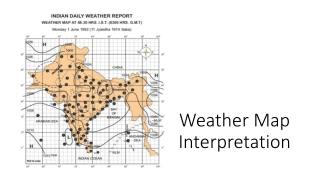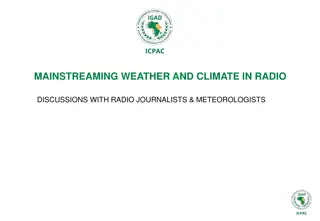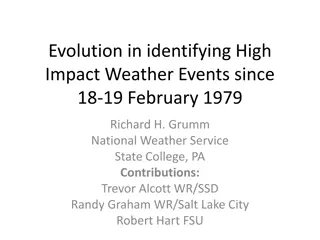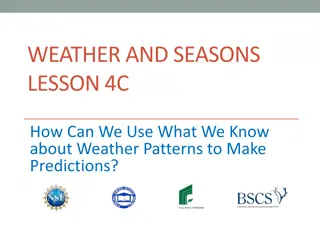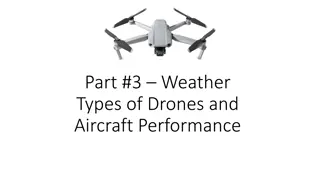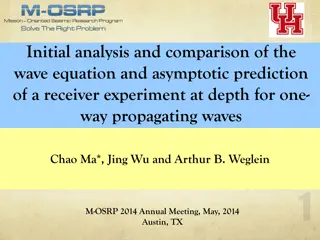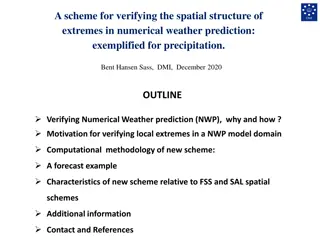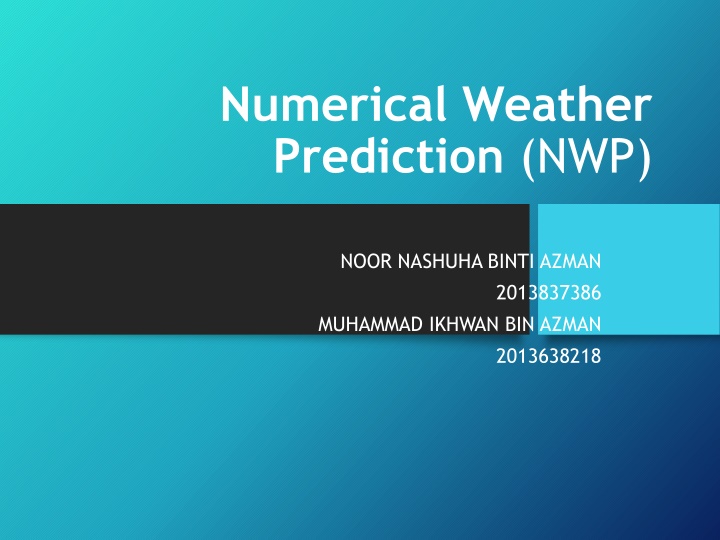
Numerical Weather Prediction (NWP) and Parallel Computing
Explore the world of Numerical Weather Prediction (NWP) and its reliance on parallel computing for weather forecasting using mathematical models of the atmosphere and oceans. Learn about the historical background, purpose, domain area, and parallel architecture used in NWP simulations. Discover how regional models and high-performance computing technologies improve weather predictions.
Download Presentation

Please find below an Image/Link to download the presentation.
The content on the website is provided AS IS for your information and personal use only. It may not be sold, licensed, or shared on other websites without obtaining consent from the author. If you encounter any issues during the download, it is possible that the publisher has removed the file from their server.
You are allowed to download the files provided on this website for personal or commercial use, subject to the condition that they are used lawfully. All files are the property of their respective owners.
The content on the website is provided AS IS for your information and personal use only. It may not be sold, licensed, or shared on other websites without obtaining consent from the author.
E N D
Presentation Transcript
Numerical Weather Prediction (NWP) NOOR NASHUHA BINTI AZMAN 2013837386 MUHAMMAD IKHWAN BIN AZMAN 2013638218
INTRODUCTION Numerical weather prediction (NWP) uses mathematical models of the atmosphere and oceans to predict the weather based on current weather conditions Numerical weather prediction has emerged as one of the important discipline requiring increasing computing power. Climate and weather modelers were among the first users of parallel computers. In parallel processing different parts of application code are computed at the same time by different processors working in parallel. There are worldwide efforts to port weather forecasting codes on parallel computers.
BACKGROUND 1950s :Numerical weather prediction and climate simulation have been among the computationally most demanding applications of high performance computing. 1980s : The most powerful computers have featured an ever larger number of processors. 2000s : This number is often several thousand. An operational weather model must use all these processors in a highly coordinated fashion.
PURPOSE To illustrate the application of parallel network processing computing system to an important class of problem in hydrodynamics.
Domain Area Regional models allow for the use of finer grid spacing than global models because the available computational resources are focused on a specific area instead of being spread over the globe. This allows regional models to resolve explicitly smaller-scale meteorological phenomena that cannot be represented on the coarser grid of a global model.
PARALLEL ARCHITECTURE USED The present study is an attempt to explore and examine the computational time required for the highly complex numerical simulations of weather and ocean models with multi core processors and variable RAM/processor speeds. Since multiple instructions multiple data streams (MIMD) is the most flexible architecture, NWP probably need this.
PARALLEL PLATFORM I/O also has been a problem in data-intensive parallel applications. To address this problem, high performance I/O libraries or systems, such as the MPIIO, HPIO, etc. have been designed and implemented To allow file decomposition that matches array decomposition, a structured file format that facilitates efficient storage and access of multi- dimensional arrays is needed. The PIC, a parallel I/O library for clusters, was developed at the SRL using the netCDF. PIC provides two main operations: the Scatter and the Gather
ADVANTAGES NWP The programmer can take the maximum advantage of mode control, neighbouring connection, variables geometry and simultaneous operation of network processing. The numerical solution elliptic partial differential equations by the parallel processing network.
CONCLUSION A parallel processing system of the type will give significant increase in computational speed over that sequentially organized computing system in the field of fluid dynamics as well as in other scientific field.
REFERENCES Numerical weather prediction. (n.d.). Retrieved October 30, 2016, from https://en.wikipedia.org/wiki/Numerical_weather_prediction Kothari, S. C., Cho, J., & Deng, Y. (2002, January). Software Tools and Parallel Computing for Numerical ... Retrieved October 30, 2016, from https://www.researchgate.net/publication/220950154_Software_Tools_an d_Parallel_Computing_for_Numerical_Weather_Prediction_Models Granma, A., Gupta, A., Karypis, G., & Kumar, V. (2003). Introduction to Parallel Computing (Second ed.). Addison Wesley. Numerical Weather Prediction. (n.d.). Retrieved October 30, 2016, from https://www.ncdc.noaa.gov/data-access/model-data/model- datasets/numerical-weather-prediction Navarro, C. A., Kahler, N. H., & Mateu, L. (2013, September 10). A Survey on Parallel Computing and its Applications in Data-Parallel Problems Using GPU Architectures [Review]. 300-303.

